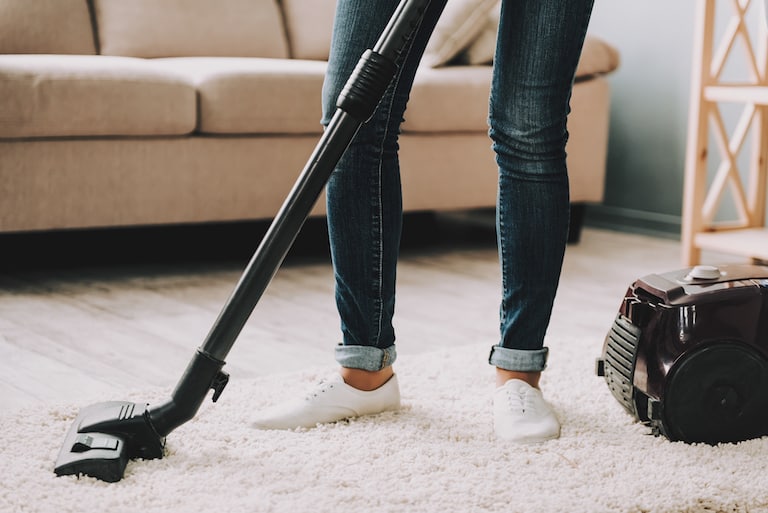Summer brings more than just sunshine and outdoor adventures—for many, it ushers in a season of persistent sneezing, coughing, runny noses, and irritated, watery eyes. While these symptoms might have you yearning to retreat indoors, your home may not be the safe haven you imagine. In fact, your living space could be harbouring a variety of allergens that contribute to your discomfort.
Think of your home as a complex ecosystem where various potential triggers coexist: dust settles in forgotten corners, mould thrives in damp spaces, microscopic dust mites make themselves at home in your bedding, and pet dander floats invisibly through the air. Even the most meticulously kept homes aren’t immune to these indoor allergens, which can trigger reactions just as severe as their outdoor counterparts.
Consider these common indoor triggers that might be affecting your family’s health:
- Dust mites in bedding, carpets, and upholstered furniture
- Mould spores in bathrooms, kitchens, and garages
- Pet dander that clings to surfaces and circulates through ventilation
- Bed bugs that may lurk in mattresses and soft furnishings
- Airborne particles that settle on surfaces throughout your home.
The good news? You’re not powerless against these invisible irritants. While completely eliminating allergens might be impossible, you can significantly reduce their presence in your home. Understanding these triggers is your first step toward creating a healthier living environment. By reducing your exposure to allergens, you can help lower your need for medications and improve your symptoms.
Bedroom basics
Because you spend a third of your life in the bedroom, start there when tackling allergy triggers in your home, then work on other rooms where you spend most of your time.
- Vacuum and dust everything with a damp cloth. Don’t forget ceiling fans and windowsills.
- Vacuum under the bed weekly, not just around it.
- Wash all bedding (soft toys and throw blankets) weekly in hot water (at least 60°C) to eliminate dust mites and bed bugs.
- Use allergen-proof covers for mattresses and pillows.
- Remove decorative cushions that collect dust.
- Try to keep pets out of the bedrooms.
Furnishings
- Choose easy-to-clean chairs, dressers and nightstands made of leather, wood, metal or plastic. Avoid upholstered furniture.
- Replace heavy curtains with washable blinds or lightweight, washable curtains.
Declutter
A messy bedroom and home can harbour various allergy triggers as it gathers dust:
- Remove items that collect dust, such desk ornaments, books and magazines.
- Store children’s toys, games and stuffed animals in plastic bins with lids.
No more dust and pollen traps
- Choose hard flooring over carpets where possible and rather use smaller washable rugs, which can be cleaned easier.
- Remove decorative cushions that collect dust.
Upgrade your vacuum cleaner
A vacuum with a HEPA (High-Efficiency Particulate Air) filter can make wonders for cleaning and allergy-proofing your house: they can remove really fine particles of dust and debris.
Mould issues
Mould is another huge culprit for allergies, and it develops in wet, dirty places, like the back of the sink, the shower curtain and cracked tiles.
- Inspect your bathroom and kitchen and if you find a crack, seal it.
- Make sure all surfaces are always clean and dried off, to prevent mould formation.
- Use dehumidifiers in damp areas to prevent mould growth.
- Install exhaust fans in bathrooms and run them during shower.
- Keep indoor humidity between 30-50%.
- Check window frames regularly for condensation.
- Clean or replace shower curtains monthly.
Choose natural cleaning products
Try out some all-natural solutions for everyday cleaning. Baking soda, vinegar, and plain water can go a long way in cleansing and deodorising the kitchen, bathroom, and floors, and these products won’t cause irritation to your skin, eyes, and lungs.
If you are fighting indoor allergies as you take on your cleaning, connect with an Intercare doctor to find relief that will let you get back to your seasonal chores.
Remember to wear a mask while cleaning to avoid triggering symptoms, and consider cleaning when allergy sufferers are out of the house to allow dust to settle. It’s also worth noting that while these strategies require consistent effort, they can significantly improve your home’s air quality and reduce allergy symptoms.
Reviewed: December 2024












